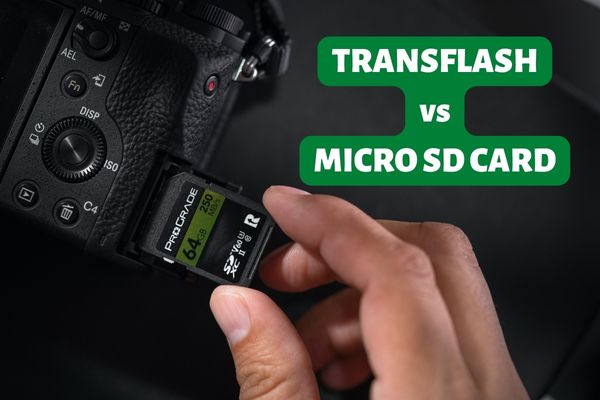Some, however, have been curious about the differences between TF cards and SD cards and what they are used for. Many people don’t realise that TF, or TransFlash, is a word for memory cards. In this article, we’ll go over what a TF Card is and how it differs from a micro SD card.
What is a TF Card or TransFlash Card?
A common abbreviation for TransFlash is TF, sometimes written as T-Flash. These flash drives now go by the name “micro secure digital” (SD). These memory cards first appeared in 2004 from the SanDisk Company. When it came to digital data storage, the TF card was the smallest memory card available. Tablets, cameras, computers, and other similar devices may all utilise Micro SD and TF Cards to store data like movies and images. It was believed that this memory card, about the size of a fingernail, was the tiniest memory card in the world. In a nutshell, the micro SD card was first marketed and sold under the name and logo of the SanDisk Company’s TF Card. TransFlash, like any other product, has had updates and improvements throughout time, and the name has been altered to represent it.
Difference Between TF (TransFlash) and microSD Cards
The terms TF cards and microSD cards both refer to various types of storage media, however, they are different in names only. The SD card was formerly known as a TF card but has now been rebranded as the more convenient microSD card. The only difference between microSD cards and TransFlash cards is this one, and none of them has any additional differences. After SanDisk rebranded the TransFlash card as a MicroSD card in 2014, the two types of memory cards began to be treated as interchangeable. In 2004, TF cards were widely regarded as state-of-the-art when it came to storage media. It’s also worth noting that TF cards and microSD cards have identical storage capacities. Both can store data at 128MB, 256MB, 512MB, 1GB, 2GB, 4GB, 6GB, 8GB, 16GB, and 32GB capacities, while TF cards can also store data at 64GB. Hopefully, you now understand the key differences between Micro SD and TF memory cards. The maximum amount of data that could be stored on the original SD card was 2GB. Then 32GB SDHC cards appeared, taking up the same amount of space as their predecessors. The most up-to-date SDXC card utilises cutting-edge technology and expands storage capacity to a whopping 2 terabytes. Keep in mind that these SD cards are not compatible with older devices. A newer version cannot be used with an older one. However, you may simply utilise an older card on a newer device.
TF or a microSD card – which one is better?
There is no difference between the two in terms of their technological implementation. Both TF and SD cards may be used in each other’s slots.
Is a TF card size the same as a micro SD card?
There is more than one form factor for SD cards. The size of a TF card and a microSD card is identical. Both cards may be used in the same reader. However, make sure that the form factor is compatible.
What is the Best TF card I can get from the market?
Make sure you know what you need out of a TF card before you purchase one. Most microSD cards will function well in a mobile phone. For seamless functioning, however, a TF card of better quality is required. An SD card with a UHS-II rating or above is required to handle the high data rates needed to record 4K video.










